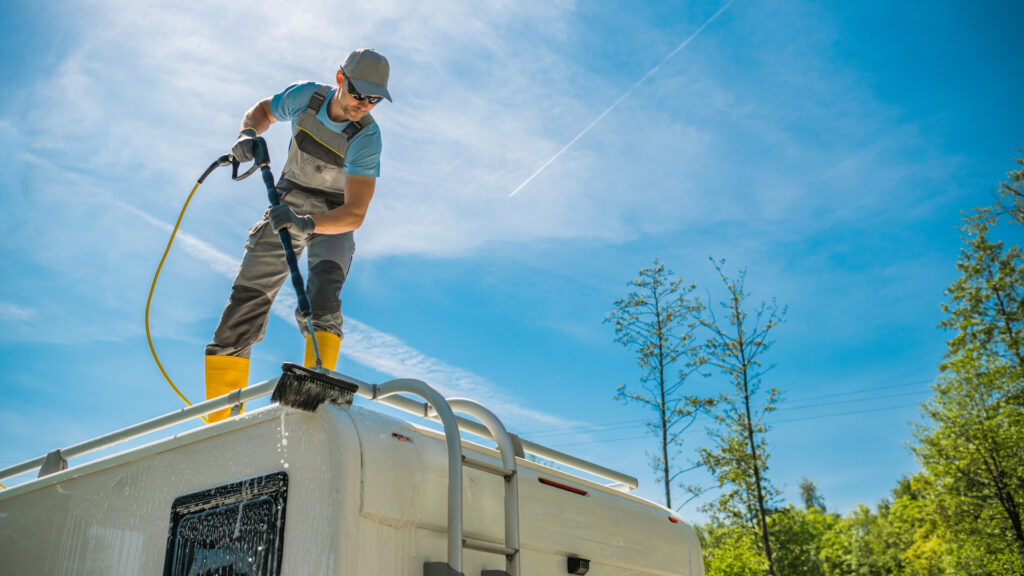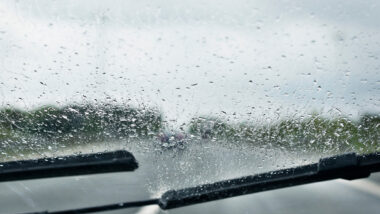Table of Contents Show
You probably know that chickenpox is contagious and can quickly spread from one person to another. However, did you know that your RV’s roof can also catch it?
If your rig is unfortunate enough to come down with a case of chickenpox, it’s a severe situation. You’re going to be in for an extensive and costly repair.
So, what does it mean when your RV roof has chickenpox? Let’s find out!
What Are RV Roof ‘Chickenpox’?
Like chickenpox covering an infected individual’s body, your RV roof can experience a similar phenomenon. The rubber roof material develops bumps, blisters, and tiny pits in the material. Some individuals have reported the spots come and go depending on the temperature.
Unfortunately, some RVs experience worse cases than others. It could be anywhere from a small section to the entire roof that gets infected. In addition, they may take years to develop, and they can happen when you least expect it. So, where do they come from?
What Causes RV Roof ‘Chickenpox’?
RV roof chickenpox is the result of a bad batch of roofing membranes. Dicor is one of the most common manufacturers of these materials. There’s no telling when a bad material gets used on an RV until it’s too late. The issue typically appears long after the consumer has taken the rig home.
Even if you stay current on your RV roof maintenance, it can still develop chickenpox. However, you’ll want to take action immediately once it does appear. Getting the issue fixed as soon as possible is essential.
How Do You Fix RV Roof “Chickenpox’?
If you experience RV roof chickenpox, we’ve got good and bad news for you. First, the bad news. There’s a good chance your RV will need a completely new roof because the problem is in the material used during construction. Sadly, there’s nothing you or anyone else can do to fix it. However, we mentioned there was good news.
We’ve read multiple reports of users contacting the manufacturer (typically Dicor) and alerting them of the problem. Thankfully, the owners reported that the company stepped up to the plate and approved replacing the roofing material. This resulted in the owner getting a new roof on the manufacturer’s dime.
How to Protect Your RV Roof from Damage
There’s nothing you can do to prevent RV roof chickenpox. However, there are some things you can do to protect it from other common issues. Here are several steps to protect your RV roof from damage.
Do Regular Inspections
No matter how often you use your RV, you should inspect the roof regularly. Some warranties require owners to check the seals every 30, 60, or 90 days. If you don’t, you could have warranty claims denied because you didn’t do your part.
You might not see a low-hanging tree limb or other item while hauling your rig down the road. These can scratch or rip the roofing material. You can fix minor issues by using tape like Eternabond.
- MULTI-USE: Perfect for use on metal buildings, trailer/RV roofs and sides, drain pans, drain pipes, boats, canoes. bonds...
- NO ADDITIONAL SEALING REQUIRED: Aluminum backing, combined with a layer of advanced MicroSealant, creates a waterproof,...
However, take your time with this because, as its name indicates, it bonds quite well to surfaces. You’ll create quite a mess for yourself if you try to rush the process.
Keep It Clean
You should clean your roof three or four times each year. However, check the recommended maintenance schedule provided by your manufacturer. You can use a mild detergent and soft-bristle brush to clean the roofing material. Put extra effort in areas where dirt, grime, and tree sap have stuck.
Repair Sealant and Caulking
The sealant around holes in your roof can develop cracks and begin to pull away from the materials. Water can penetrate the roof and cause severe water damage when this occurs. When you discover the issue, it’s likely far too late and will require an extensive and costly repair.
We recommend always having a can of roof sealant on hand so you can address issues as they occur. Regularly inspecting your roof allows you to spot minor changes. You can save yourself some money and a headache or two if you can catch issues when they’re small.
Keep in Mind: So which RV Roof Sealant is the best? Here are 10 great options!
Add UV Protection
Unless you have covered storage, your RV’s roof will spend most of its life baking under the hot sun. UV rays can destroy the roofing material and accelerate the aging process. One way to prevent this is by applying a UV protection layer.
Dicor even makes a product specifically designed for their roofing membranes. You’ll want to thoroughly clean your roof before applying any protection. Once it’s clean, let it dry, and follow the directions carefully to apply it to the roofing material on your rig.

Avoid Overloading
One destructive mistake you want to avoid is overloading the roof. Placing too much weight on it can cause supports to break and cause severe damage. Unfortunately, not all RVs are walkable. Check with your manufacturer regarding the weight capacity of your roof.
While we understand that your roof could be a great spot to hang out and watch the sunset, it’s not always a good idea. Even the most capable roofs generally max out around 250 to 300 pounds. Depending on your size, snuggling up with a loved one could quickly push you over the limit.
Watch for Low Clearances
Low clearances are every RVer’s worst nightmare. Unfortunately, they can sneak up on you when you least expect them. Everything from gas station overhangs to low-hanging tree limbs can cause severe damage to air conditioners and your roofing membrane.
We use RV Life’s
Keep in Mind: Here’s why you need to know your total RV height clearance!
Store It Properly
In an ideal world, everyone would store their rig in a climate-controlled storage unit. However, that’s not possible, and they’re pricey. When storing your RV, take the time to prepare it for the elements.
They make covers you can place over your entire unit. However, if they don’t fit correctly, the wind and rubbing of materials can cause severe damage. You’ll likely be unaware of the damage until you use your camper for the first time at the start of next year’s camping season. Trust us, this isn’t how you want to start your camping season.
Watch for RV Roof ‘Chickenpox’
RV roof chickenpox is a destructive and devastating condition. Luckily, manufacturers are stepping up and addressing the issues. If you’re one of the unlucky owners with an RV experiencing the situation, take action immediately. Don’t wait until it worsens and becomes a more significant issue.
Have you ever seen or experienced RV roof chickenpox?
Last update on 2024-07-25 / Affiliate links / Images from Amazon Product Advertising API







